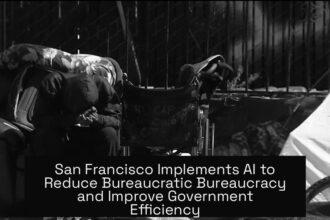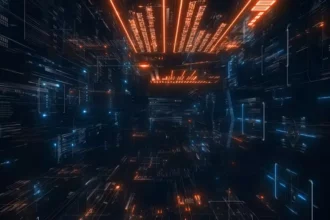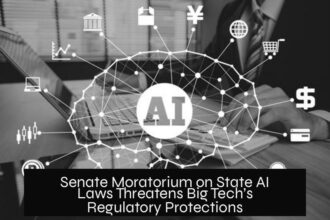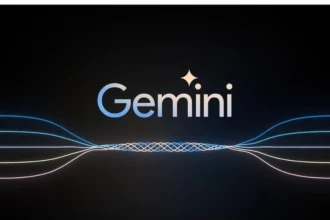Table of Contents
ToggleAI Robots Impacting College Graduates’ Job Market in 2025
AI is displacing many entry-level jobs for college graduates in 2025, leading to higher unemployment rates among recent grads compared to the overall workforce. This shift has fueled discussions about a potential white-collar recession driven by artificial intelligence advances, as detailed in recent economic analyses.
Rising Unemployment Among Recent College Graduates
Federal unemployment data indicate that while the general U.S. unemployment rate remains relatively low, recent college graduates face a steeper jobless rate. According to Oxford Economics, the unemployment rate for individuals aged 22 to 27 with bachelor’s degrees hovers near 6% as of April 2025. This figure surpasses the just above 4% rate for the overall workforce.
Comparative Employment Trends
- The unemployment gap between college-educated young workers and those without degrees is currently about 1.6 percentage points.
- This gap was over 8 points during the 2008 financial crisis and similarly increased in 2020 with the pandemic’s impact on service jobs.
- Unlike previous recessions, the current challenge disproportionately affects white-collar positions traditionally held by college grads.
AI’s Role in White-Collar Job Displacement
AI technologies increasingly automate tasks once performed by white-collar workers, especially in tech and entry-level roles. Experts like Martin highlight that AI enhances productivity for higher-level employees but displaces subordinates, creating fewer opportunities for new graduates.
Political and Educational Factors
Simultaneously, reductions in public funding for universities limit educational access. This constriction may exacerbate the supply-demand mismatch for skilled workers as the market adjusts to technological changes.
Historical Context and Future Adaptation
Historically, technology displaced specific job types while generating new roles. For instance, the automotive industry replaced horse and buggy jobs with many more modern opportunities. Similarly, despite AI’s disruption, the labor market is likely to adapt over time, potentially creating new job categories.
Outlook on Tech Degrees and AI Productivity
Once a secure path, computer science degrees may see reduced demand as AI absorbs many tech tasks. However, experts predict that in coming years AI-driven productivity gains will yield new employment benefits, signaling a shifting but evolving job market landscape.
Key Takeaways
- Recent college graduates face higher unemployment rates in 2025 compared to the general workforce.
- AI plays a significant role in displacing white-collar jobs, mainly in entry-level tech roles.
- Education funding cuts further complicate workforce preparedness.
- Historical precedents suggest eventual labor market adaptation to AI advancements.
- Computer science graduates may face reduced demand as AI integrates into workplaces.
- Long-term AI productivity gains could generate new job opportunities.
AI Robots Are Stealing College Grads’ Jobs in 2025’s ‘Summer of Hallucination’: What’s Really Happening?
Yes, AI robots are indeed snatching jobs from fresh college grads in 2025’s so-called “Summer of Hallucination.” But before you picture a sci-fi nightmare with robots marching in suits, let’s unpack what’s behind this shift and what it means for recent graduates struggling to make a foothold in the workforce.
The job market for college grads has taken a surprising twist this year. Despite the U.S. overall unemployment rate remaining relatively low, recent graduates face a disproportionate challenge. According to Oxford Economics, folks aged 22 to 27 with bachelor’s degrees saw an unemployment rate hovering near 6% in April—noticeably higher than the broader workforce’s just-over-4% rate. You might say, “Why are the smarty-pants unemployed more?” That’s partly because AI isn’t just a buzzword anymore—it’s a force changing who does what at work.
Historically, tech revolutions have shaken up the job scene. Telephone operators got the boot, typographers faded out, and horse-and-buggy drivers were replaced by auto factory workers. The twist now? AI is targeting white-collar roles traditionally thought to be “safe.” The Oxford Economic report adds muscle to rumors we’ve heard about AI displacing office jobs, not just factory hands.
Remember the last big job gaps? After the 2008 financial crash, the unemployment difference between grads and non-grads was around 8 points. Then came the 2010s tech boom, and grads zoomed ahead with tons of new roles. The pandemic repeated this pattern; service jobs crashed, but many white-collar positions survived thanks to Zoom. But 2025 is different. AI advances are carving into the very tech jobs that powered the last decade.
Martin, a labor market expert featured in the report, points out that “entry-level and lower-tier jobs inside companies are most vulnerable.” Why? Because AI boosts productivity of higher-up workers, reducing the need for the junior roles below them. Think of it like AI acting as the new intern that never sleeps and never asks for coffee runs but does the grunt work faster and cheaper.
The Political Wind and Education: A Compounded Challenge
Compounding the problem, political moves, such as reduced university funding under recent administrations, make it tougher for colleges to pump out skilled graduates equipped for a shifting job market. Fewer resources mean less innovation in education and fewer safety nets for young workers thrown into this AI-powered frenzy.
The worries about technology taking jobs aren’t new, of course. Every major shift—from steam engines to computers—gets met with cries of “Job apocalypse!” yet the market usually adapts. The auto industry outgrew horse-drawn carriage work, offering new careers and opportunities. The hope? AI will eventually create new job categories, ones we can barely dream of now.
So, Should Computer Science Grads Panic?
Once upon a time, a computer science degree was a golden ticket. Now, it seems the market’s cooling. As AI tools become easier to use and more powerful, the demand for junior tech workers may decline. Martin warns that this could lead to fewer tech grads in coming years, aligning education output more closely with actual job demand.
But wait! Not all doom and gloom. As AI adoption spreads, productivity is expected to soar, and that’s when new job opportunities will emerge. Think about it: as AI handles routine coding or data analysis, human creativity and complex decision-making become more valuable. The workers who adapt and learn AI collaboration will likely find themselves in demand like never before.
What Can Recent Graduates Do?
- Adapt Skills: Focus on learning skills AI cannot easily replicate—creativity, emotional intelligence, critical thinking.
- Learn AI Tools: Instead of competing with AI, work alongside it. Knowing how to harness AI can make graduates more indispensable.
- Stay Flexible: Job markets shift fast. Be ready to pivot into emerging fields or hybrid roles.
- Advocate for Education: Push for policies that fund retraining programs and modernize college curricula.
Facing an AI-powered “white-collar recession” is daunting. But those who look beyond the “day job robot takeover” headlines and prepare for a new work reality can carve out better futures.
A Final Thought to Chew On
Do AI robots really “steal” jobs, or do they just make old job definitions obsolete? The key lies in how quickly workers, colleges, and policymakers adapt to the evolving landscape. Like all technology waves, this one brings disruption—and fresh chances to ride the tide rather than get swept away.
So, for college grads staring down the 2025 job market, here’s a challenge: Instead of fearing the “Summer of Hallucination,” imagine it as a doorway to reinvent how work gets done—and your role in it.
Why are recent college graduates facing higher unemployment rates in 2025?
Recent grads are competing with AI that automates many entry-level and white-collar jobs. This displacement has pushed their unemployment rate near 6%, higher than the overall 4% rate.
How does AI cause the ‘Summer of Hallucination’ in the job market?
AI improves productivity at higher job levels, reducing the need for lower-level roles. This shift leads to job losses among young professionals, causing what’s called the ‘Summer of Hallucination’ in 2025.
How does the current unemployment gap between college grads and non-grads compare historically?
The current gap is about 1.6 points, much smaller than the over 8-point gap during 2008 and 2020 crises, which mainly hit non-college jobs. Now, AI-driven job cuts affect white-collar roles more.
What impact might university funding cuts have on this employment trend?
Reduced funding under the Trump administration may limit education access and innovation, potentially shrinking the talent pool that can adapt to AI-driven job changes.
Is AI expected to create new jobs like past technology advances?
Historically, technology created new roles despite eliminating old ones. Experts believe labor markets will eventually adapt to AI, potentially boosting productivity and demand for new skills in a few years.





